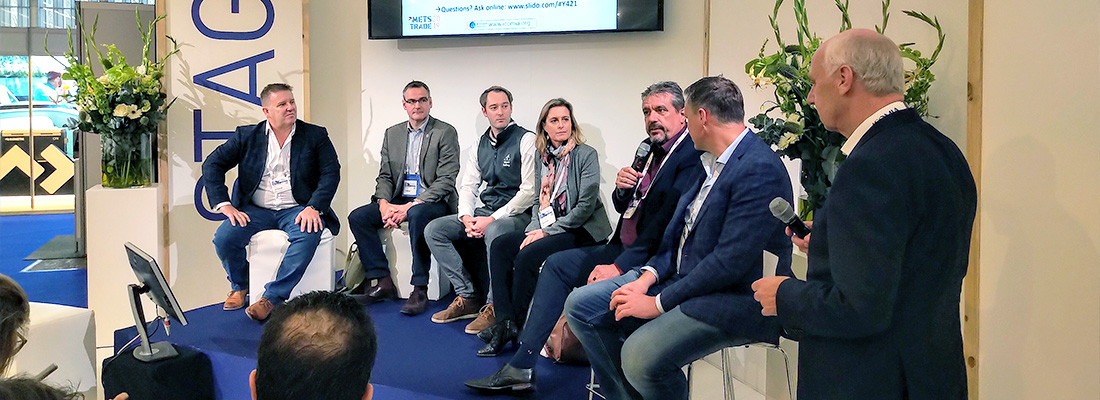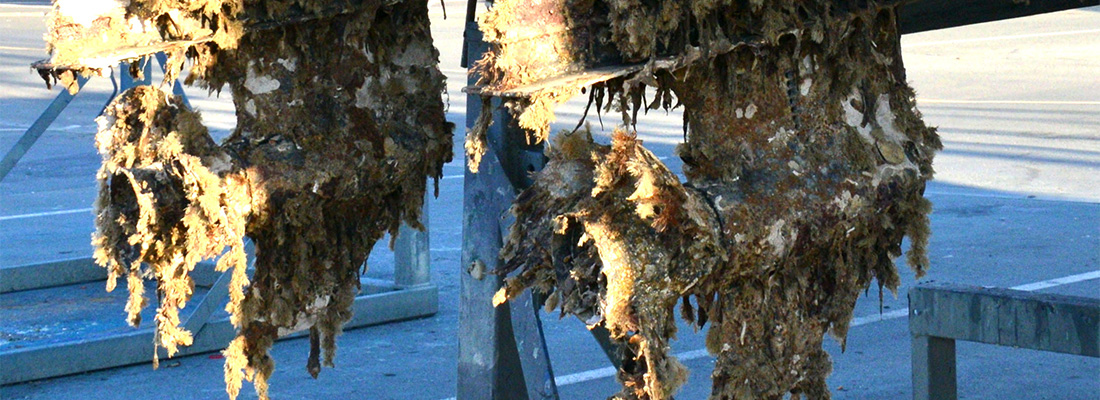Against overwhelming evidence that biofouling is contributing to the loss of Biodiversity around the world, a Global Project Task Force called Glo Fouling, has been initiated under the auspices of IMO (International Maritime Organisation.) The project is fully supported by a number of strategic partners, including World Sailing, and the International Paint & Printing Ink Council (IPICC). Both parties had representatives speaking on the panel at the I-nnovationLab Stage on the first day of METSTRADE 2019. The panel consisted of experts from diverse backgrounds discussed the challenges presented by marine biofouling, and the way forward for our industry with various types of antifouling solutions that are currently available.
Beware the Silent Killer
Session moderator Albert Willemsen, Environmental Consultant with ICOMIA, introduced the subject, by stating that invasive (non-native) species coming from underwater marine fouling was the major contributor to loss of biodiversity, with implications for the environment on par with Climate Change, and referred to by a UN report as 'the sIlent killer!'
As an example, in the last 10 years, 20,000 individual species have been identified in Europe, with 14,000 of them now being designated as invasive / non-native. And, experience has proven that eradication of invasive species once they become established in the marine environment is extremely difficult, some in particular, such as Zebra Mussels are proving almost impossible to deal with. A ‘non-indigenous’ species is one that arrives in a harbour having never been identified in that area before. They may not all become ‘invasive species’, which is what occurs when they become permanently established by out-competing other species that have lived there naturally in the past.
Key point summary:
During the discussion, it was agreed that biocide free antifouling solutions are now becoming much more prominent in the mind-set of the boating community, and that many consumers are asking about what biocides are actually contained in the coating formulations. It was stated that modern antifouling coatings are biocide free, and proving themselves to be just as effective as previous biocide based formulations. It was also agreed that consumers must be open minded, and change their attitudes, as must shipyards and applicators, due to the application requirements being more demanding than with previous generations of coating based antifoulings.
Other 'non-paint' solutions are being developed and proven, such as Ultrasonic systems, and wrapping materials that prevent biofouling from sticking to the hull by various means. For example, with thousands of tiny nylon hairs incorporated in the wrap resembling the skin of a sea urchin. Ultrasonic systems transmit high frequency sound waves through the hull, creating a water movement at the surface which stops the barnacle larvae from embedding. It is therefore completely non-toxic, and according to the manufacturers, does not emit signals that are predatory to marine species. ;Developers of these types of non-toxic system were represented on the panel, as well as speakers from two of the marine industry's leading coatings manufacturers.

More independent data required
With multiple and ever-increasing options, and no 'one size fits all' solution, it was stated that it will be helpful to have availability of independent data on biocide content, toxicity levels, and ultimate performance of different types of system, based on practical testing in a variety of environments.
To this end, the Dutch Waterways Recreational Foundation in cooperation with HISWA have been running a long-term trial on several charter yachts with a range of systems, including coatings, ultrasonics and wrappings with non-stick properties. A comprehensive report will be published in January 2020 revealing the results of these trials, which it is hoped will give consumers a factual data base to help them decide on the most suitable environmentally friendly solution for their specific application.
Prevention at the yard and in transit
The threat of invasive species from waste water run off after hull preparation before antifouling was also highlighted. The installation of catchment and filtration systems is being implemented in the Netherlands and some other countries, but this needs to be enforced more widely. Apparently, Australia and New Zealand have carried out the most thorough investigation into the level of filtration required, in order to effectively remove invasive species from hull preparation run-off water. Their consensus is that filtering down to 10 or 12 microns is required in order to remove the most threatening contaminants including dead and living spores.
It was also mentioned, that for fully effective prevention of the spread of invasive species, the boat owner has to start thinking about cleaning of the hull before transiting from one cruising area to another, and not after arriving.
Niche areas will continue to present a challenge
It was pointed out that other factors have to be taken into account, apart from the traditional antifouling of the hull. For instance, the Glo Fouling project will have to focus on ‘niche areas’ such as cooling water systems, through hull inlets, rudder connections and shadow areas, depending on the underwater hull configuration. Therefore, the design profile of the submersed area of boats will need to be considered more carefully in future, to avoid unnecessary build-up of biofouling in such areas, and it may well be that a combination of systems will ultimately provide the best solution for total biofouling control.
In conclusion: Albert Willemsen said, "10 years ago, this kind of open discussion with so many options and future possibilities would not have been possible. And for sure, the recreational and Superyacht sectors, are much more open minded and progressive on such matters than the commercial shipping industry is."

